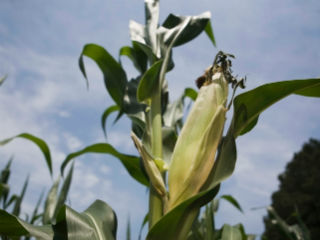PHL corn production remains insufficient, importation necessary –industry group

The Philippine Maize Federation (PhilMaize) said the country’s corn production has been slackening the last few years which makes importation a necessity.
In a statement, PhilMaize President Roger Navarro said the Philippines’ corn production has been insufficient for a while now, and could not meet the demand for feed manufacturing.
Navarro added that the industry understands the need for importation, but this should be done with the right tax and regulation.
“The solution has been there ever since we signed up with the WTO (World Trade Organization) and we have no problem with that. They (feed millers) can import corn and corn substitutes by way of feed wheat any time they want but they must pay their taxes. That is all we wanted,” he explained.
“Corn and corn substitute imports have been allowed ever since we signed up with the WTO. They can import anytime,” he added.
The group said corn comprises 60% to 70% of the ingredients for the production of animal feeds, while the cost of feeds can take up 80% of the production cost for chicken and other livestock products.
Navarro said that on the supply side, local production for yellow corn stood at 5.7 million metric tons (MT), while white corn stood at 2.5 million MT at 50% as food or feed equivalent.
“Total supply would be 6.95 million MT versus total demand for meat requirement at 7.8 million MT. This will translate to an 850,000 MT deficit,” he said.
Latest data from the Philippine Statistics Authority (PSA) also showed that as of August 1, 2021, the country's total corn stocks inventory level was estimated at 707,650 MT, falling by 3.4% from the 732,180 MT level in the same period in the previous year.
Corn stocks dropped by 23.4% from the previous month's level of 924,250 MT.
Year-on-year, corn household stocks went up by 12%, but stocks in commercial warehouses/wholesalers/retailers dropped by 5.7%.
In comparison with the previous month's level, corn household stocks increased by 9.8% but dipped by 27 percent for commercial warehouse/wholesalers/retailers.
Right now, corn farmers only harvest twice a year, with the first, or the wet season, producing 65% of the annual output.
The second harvest is February down to the dry season.
Harvests are plagued by quality and volume issues.
There is not enough corn to supply the growth of the poultry sector and the recovery of the hogs from the African Swine Flu as the economy slowly rebounds from the COVID-19 Pandemic.
“Without the proper post-harvest and storage facility, we can never achieve quality and stability in both supply and prices,” Navarro said.
In August, to address the shortfall in corn production, Agriculture Secretary William Dar issued Special Order No. 540, forming a technical working group to look at temporarily bringing down the tariff on imported yellow corn – a move that should give poultry and livestock raisers, as well as fishers, access to cheaper animal feeds, according to PhilMaize.
For yellow corn coming from ASEAN countries, the current import tariff stood at 35% under the minimum access volume, while it is 50% outside the MAV quota. Imported yellow corn coming from outside the ASEAN are slapped with a 50% tariff, it said.
This makes the inputs for feeds very expensive for the local Filipino poultry and hogs farmers who are already faced with a contraction in demand and very expensive costs to produce their finished products, the group said.
“It is ironic that imported pork with the increase of Minimum Access Volume has a tariff that is now ranging from 5 to 15% while tariffs of imported chickens are at 40%,” PhilMaize said. — DVM, GMA News



